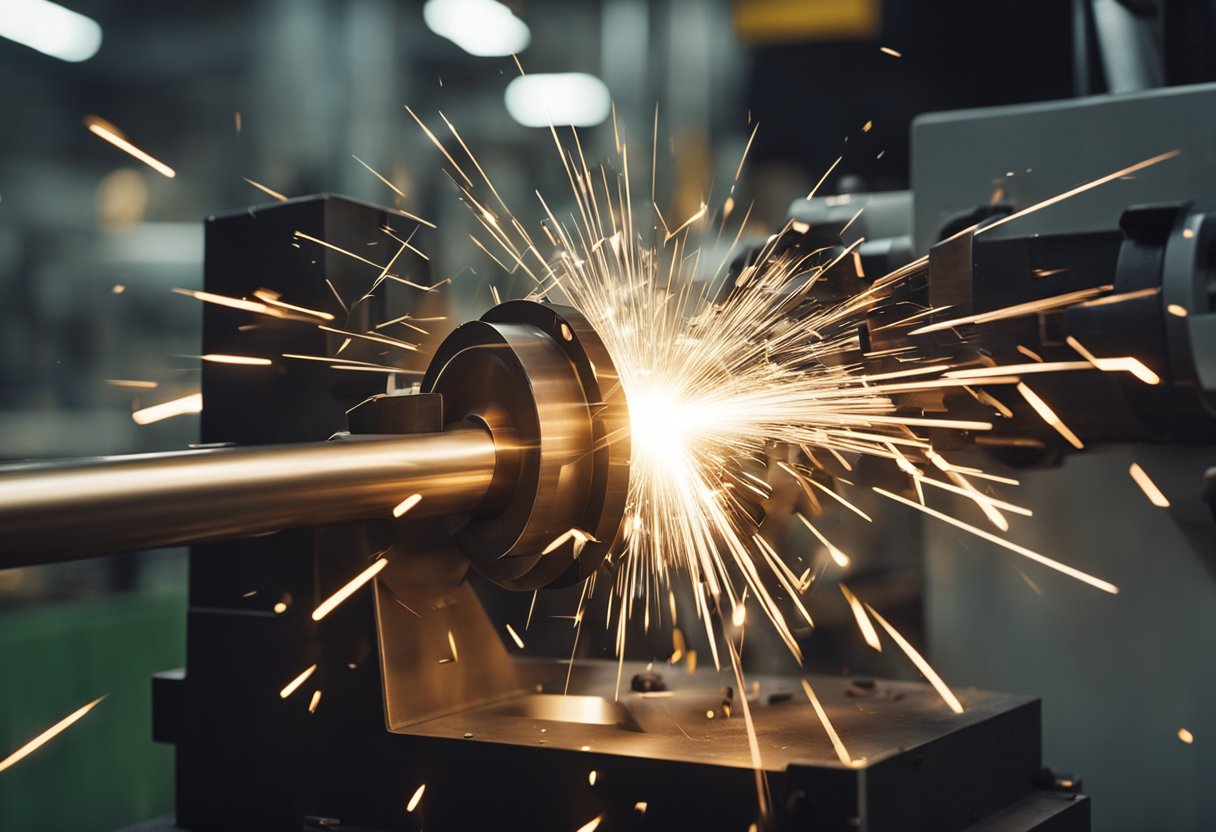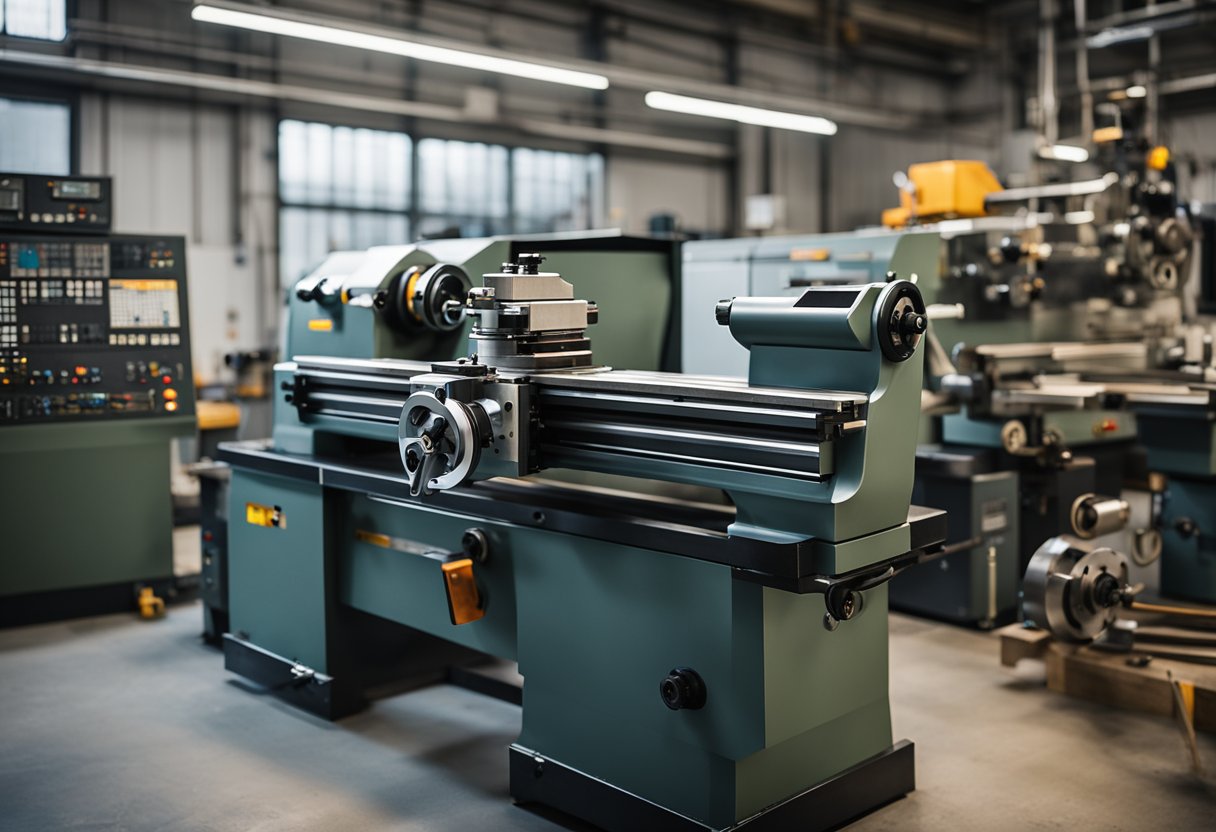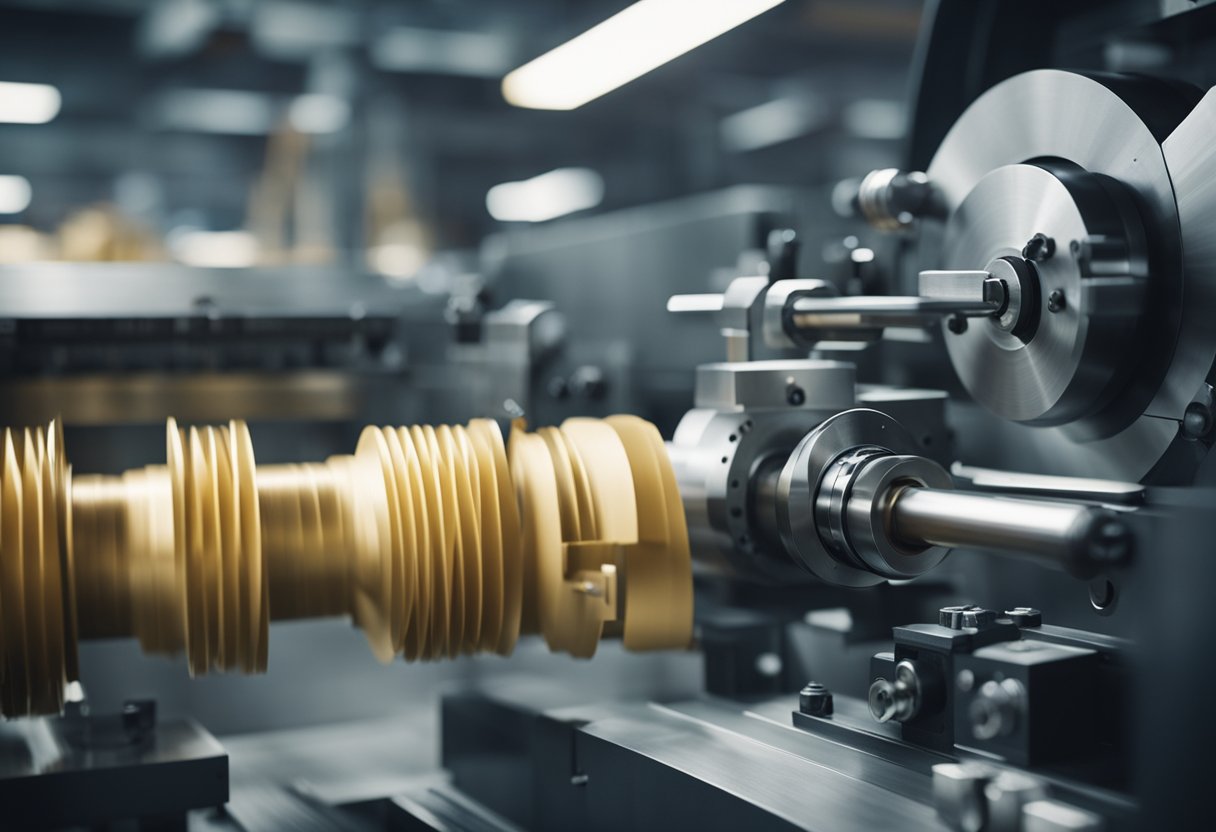CNC Metal Lathe: The Ultimate Guide to Understanding and Using this Precision Tool
A CNC metal lathe is a powerful tool used in the manufacturing industry to create precision parts. CNC stands for Computer Numerical Control, which means that the lathe is controlled by a computer program that dictates the movements of the cutting tool. This level of automation allows for increased accuracy and efficiency compared to traditional manual lathes.

One of the key features of a CNC metal lathe is its ability to work with a variety of materials, including metals such as steel, aluminum, and titanium. This versatility makes it a valuable tool in a range of industries, from aerospace to automotive to medical device manufacturing. Additionally, CNC lathes can produce parts with complex geometries and tight tolerances, making them ideal for creating intricate components.
While CNC metal lathes offer numerous benefits, they can come with a higher price tag than traditional manual lathes. However, the increased precision and efficiency can ultimately lead to cost savings in the long run. As technology continues to advance, CNC metal lathes are becoming more accessible to smaller businesses and hobbyists, making them a valuable tool for anyone looking to create high-quality parts with precision and accuracy.
Types of CNC Metal Lathes
CNC metal lathes are versatile machines that can be used to create a wide range of metal parts. There are several types of CNC metal lathes available in the market, each with its own unique features and capabilities. In this section, we will discuss the most common types of CNC metal lathes.
2-Axis CNC Lathes
2-axis CNC lathes are the most basic type of CNC metal lathe. They are designed to perform two-axis machining operations, which means they can move the cutting tool along the X and Z axes. These lathes are ideal for small-scale manufacturing, hobbyists, and entry-level CNC lathe operators. 2-axis CNC lathes are also known as small CNC lathes.
Multi-Axis CNC Lathes
Multi-axis CNC lathes are advanced machines that can perform complex machining operations. They can move the cutting tool along multiple axes, including the X, Y, and Z axes. Some multi-axis CNC lathes also have a turret that can hold multiple cutting tools, allowing for even greater flexibility. These lathes are ideal for high-volume manufacturing and are commonly used in the aerospace and automotive industries.
Vertical CNC Lathes
Vertical CNC lathes are designed to machine large, heavy parts. They are typically used in the production of components for the energy, oil, and gas industries. Vertical CNC lathes are capable of performing both turning and milling operations, making them highly versatile machines. They are also known for their high precision and accuracy.
In conclusion, CNC metal lathes come in various types, each with its own unique features and capabilities. When choosing a CNC metal lathe, it is essential to consider the type of machining operations required, the size of the parts to be machined, and the level of precision required. By selecting the right CNC metal lathe, manufacturers can increase productivity, reduce costs, and improve the quality of their products.
Key Components and Features
When it comes to CNC metal lathes, there are several key components and features that are essential for precision and power. These machines are used in a variety of industries, including aerospace, automotive, and medical, where accuracy and consistency are crucial.
Turret and Tooling
The turret is an essential component of the CNC metal lathe, as it holds the tools that shape and cut the metal. The number of tools that a turret can hold varies from machine to machine, with some models capable of holding up to 12 or more. Live tooling is also a valuable feature that allows the machine to perform multiple operations without the need for manual intervention.
Spindles and Chuck Size
The spindle is the heart of the CNC metal lathe, responsible for rotating the workpiece and providing the necessary power for cutting. The size of the spindle and chuck is a crucial consideration when selecting a machine, as it determines the maximum size of the workpiece that can be accommodated. Some machines also offer a C-axis, which allows for more precise positioning of the workpiece.
Control Systems and G-Code
The control system is the brain of the CNC metal lathe, responsible for interpreting the G-code and controlling the movement of the machine. The quality of the control system is critical for ensuring accuracy and consistency, with some machines offering advanced features such as ball screws for smoother movement and higher precision.
Overall, the key components and features of a CNC metal lathe are essential for achieving precision and power. Whether you are working with small or large workpieces, selecting a machine with the right combination of features can make all the difference in your final product.
Considerations for Purchase

When looking to purchase a CNC metal lathe, there are several factors that should be considered to ensure that the machine meets the needs of the buyer. Here are some important considerations to keep in mind:
Machine Size and Capacity
One of the first things to consider when purchasing a CNC metal lathe is the size and capacity of the machine. The size of the lathe will determine the maximum size of the workpiece that can be machined, and the capacity will determine the weight of the workpiece that can be handled. It is important to choose a machine that is large enough to handle the workpieces that will be machined, but not so large that it is unnecessarily expensive or takes up too much space in the workshop.
Performance and Precision
Another important consideration is the performance and precision of the machine. The accuracy of the machine is critical to achieving high-quality results, and the RPM (revolutions per minute) of the machine will determine how quickly the workpiece can be machined. It is important to choose a machine that is capable of achieving the necessary level of precision for the intended application, and that has a sufficient RPM to complete the work in a reasonable amount of time.
Price and Budget
Of course, price and budget are also important considerations when purchasing a CNC metal lathe. It is important to choose a machine that is affordable and fits within the buyer's budget, but that also meets the necessary requirements for the intended application. There are many budget-friendly options available, but it is important to ensure that the machine is capable of handling heavy or complex workpieces if that is a requirement.
In conclusion, when purchasing a CNC metal lathe, it is important to consider the machine size and capacity, performance and precision, and price and budget. By carefully considering these factors, buyers can ensure that they choose a machine that meets their needs and provides high-quality results.
Advancements in CNC Lathe Technology

Automation and Remote Monitoring
The advancements in CNC lathe technology have revolutionized the manufacturing industry. The integration of automation and remote monitoring capabilities has significantly improved the efficiency and productivity of CNC lathe machines. Automation has made it possible for CNC lathe machines to perform complex tasks without human intervention, resulting in increased accuracy and reduced production time.
One of the leaders in CNC lathe machine automation is Okuma. Their CNC lathe machines are equipped with the latest automation technology, including robotic arms and automatic tool changers. These features allow for seamless production processes and reduce the risk of human error.
Remote monitoring is another significant advancement in CNC lathe technology. With remote monitoring, manufacturers can monitor their CNC lathe machines from anywhere in the world. This technology allows for real-time monitoring of the machine's performance, including coolant levels, tool wear, and spindle speed. The Taig 4029 DSLS is an example of a CNC lathe machine that comes with remote monitoring capabilities.
Coolant Systems and Maintenance
Coolant systems are an essential component of CNC lathe machines. They are responsible for cooling the cutting tool and workpiece, lubricating the cutting tool, and removing chips from the workpiece. The reliability of the coolant system is crucial to the performance of the CNC lathe machine.
Manufacturers are continually improving the coolant system technology to increase its reliability and efficiency. The coolant tank is a critical part of the coolant system, and manufacturers are now designing tanks that are easier to clean and maintain. This reduces the risk of coolant contamination, which can lead to poor machine performance and increased maintenance costs.
In addition to the coolant system, manufacturers are also improving the maintenance of CNC lathe machines. Many manufacturers now offer user-friendly interfaces that make it easier for operators to maintain and repair their machines. Some manufacturers have even created websites that provide detailed instructions on how to maintain and repair their machines.
Overall, the advancements in CNC lathe technology have significantly improved the reliability, efficiency, and user experience of CNC lathe machines. With automation and remote monitoring capabilities, manufacturers can produce high-quality products with minimal human intervention. The improvements in coolant systems and maintenance have also reduced the risk of machine downtime and increased the lifespan of CNC lathe machines.
Frequently Asked Questions

What factors influence the cost of a CNC metal lathe?
The cost of a CNC metal lathe can vary based on several factors such as the size of the machine, the complexity of the design, the materials used, and the features included. Generally, larger and more complex machines with additional features will have a higher price tag.
How does a CNC lathe differ from a traditional metal lathe?
A CNC lathe differs from a traditional metal lathe in that it is controlled by a computer program rather than manually operated by a person. This allows for greater precision and accuracy in the machining process, as well as the ability to produce more complex designs.
What are the capabilities of a small CNC metal lathe compared to larger models?
While smaller CNC metal lathes may have limitations in terms of the size of the parts they can produce, they can still offer high levels of precision and accuracy. Larger models may have the ability to produce larger parts, but may also come with a higher price tag.
What should be considered when purchasing a used CNC metal lathe?
When purchasing a used CNC metal lathe, it is important to consider factors such as the age of the machine, its condition, and any maintenance or repair history. It is also important to ensure that the machine is compatible with the software and tools you plan to use.
What are the maintenance requirements for a CNC metal lathe?
Maintenance requirements for a CNC metal lathe can vary based on the specific machine and its usage. Regular cleaning and lubrication are important to keep the machine running smoothly, and any necessary repairs or replacements should be made promptly to avoid more extensive damage.
How does CNC turning compare to CNC milling in terms of applications and outcomes?
CNC turning and CNC milling are both important machining processes, but they are used for different applications. CNC turning is typically used for cylindrical parts, while CNC milling is used for more complex shapes. The outcomes of each process will depend on the specific design and materials used.
